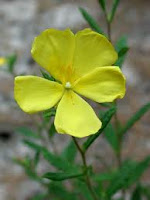Wild thyme or mother of thyme is less common than common thyme which also grows wild. It has been cultivated for century in gardens in Europe and is native also to North Africa , western Asia and Scandinavia . It is closely related to ajwain and thyme, and is a member of the mint or Labiatae or Lamiaceae family of plants. As such it is a relative of calamint, sage, Jupiter’s sage, peppermint, horehound, self-heal, the chaste tree and the small-flowered Chaste tree, ground ivy, the teak tree, yellow, purple and white dead nettles, motherwort, fragrant premna, common germander, Cretan dittany, bugle, Scarlet Bee Balm and marsh woundwort, oregano and other culinary herbs. In Urdu it is called Ban Ajwain.
 The leaves contain an essential oil which is used in perfumery, and you can make your own fragrant water by steeping the flower heads in salt and water for at least 24 hours. The leaves can be added to soups and stews, or to bouquet garni for flavouring and they also go well with vegetable dishes, and are used to good effect with courgettes and mushrooms.
The leaves contain an essential oil which is used in perfumery, and you can make your own fragrant water by steeping the flower heads in salt and water for at least 24 hours. The leaves can be added to soups and stews, or to bouquet garni for flavouring and they also go well with vegetable dishes, and are used to good effect with courgettes and mushrooms. The essential oil distilled from its leaves is used as a disinfectant, as mouthwash, and it is also an insect repellant. It also has antiseptic and fungicidal properties. A Romanian study has found that the plant possesses antioxidant properties and other studies have shown that it has antimicrobial properties and can be used against candida.
The Romans believed that it was a mood enhancer and gave it to those who suffered from melancholia. It was later believed to be a favourite flower of fairies in much the same way as bluebells were, and it was a fairy playground where the plants proliferated. Shakespeare used this idea in his play “A Midsummer Night’s Dream” Act 2 scene i: -

 “I know a bank whereon the wild thyme blows,
“I know a bank whereon the wild thyme blows,Where oxlips and the nodding violet grows
Quite over-canopied with luscious woodbine,
With sweet musk-roses, and with eglantine:
There sleeps Titania some time of the night,
Lulled in these flowers with dances and delight;
And there the snake throws her enamelled skin,
Weed wide enough to wrap a fairy in.”
In European traditional medicine it has been used to get rid of flatulence and intestinal worms, for its deodorizing properties, as an antispasmodic, expectorant, and general tonic. In India and Pakistan it is used in the treatment of whooping cough, asthma, and respiratory inflammation because of its antispasmodic properties. It is also used for back-ache.
In Wales it used to be planted on graves, and an old folk tale says that it was the fragrant herb which formed the Virgin Mary’s bed.
A tisane made with the leaves and flowers (1 ounce of dried herb to 1 pint of boiling water left to steep for 15 minutes before straining and drinking in 1 tablespoon doses frequently) was given for chest complaints, weak digestion and flatulence. Mixed with rosemary and lemon balm with a little honey to sweeten it, the tisane was given for nervous complaints and headaches (especially, says Culpeper, those caused by a hangover).
Writing in the 17th century, the English herbalist, Nicholas Culpeper has this to say about Mother of Thyme:
“Government and virtues. The whole plant is fragrant, and yields an essential oil that is very heating. An infusion of the leaves removes the head-ach, occasioned by the debauch of the preceding night.
Mother of Thyme is under Venus. It is excellent in nervous disorders. A strong infusion of it, drank in the manner of tea, is pleasant, and a very effectual remedy for head-achs, giddiness, and other disorders of that kind; and it is a certain remedy for that troublesome complaint, the night-mare. A gentleman afflicted for a long space of time with this complaint in a terrible manner, and having in vain sought for relief from the usual means employed for that purpose, was advised to make trial of the infusion of this plant, which soon removed it, and he continued free for several years, after which the disorder sometimes returned, but always gave way to the remedy.”

































